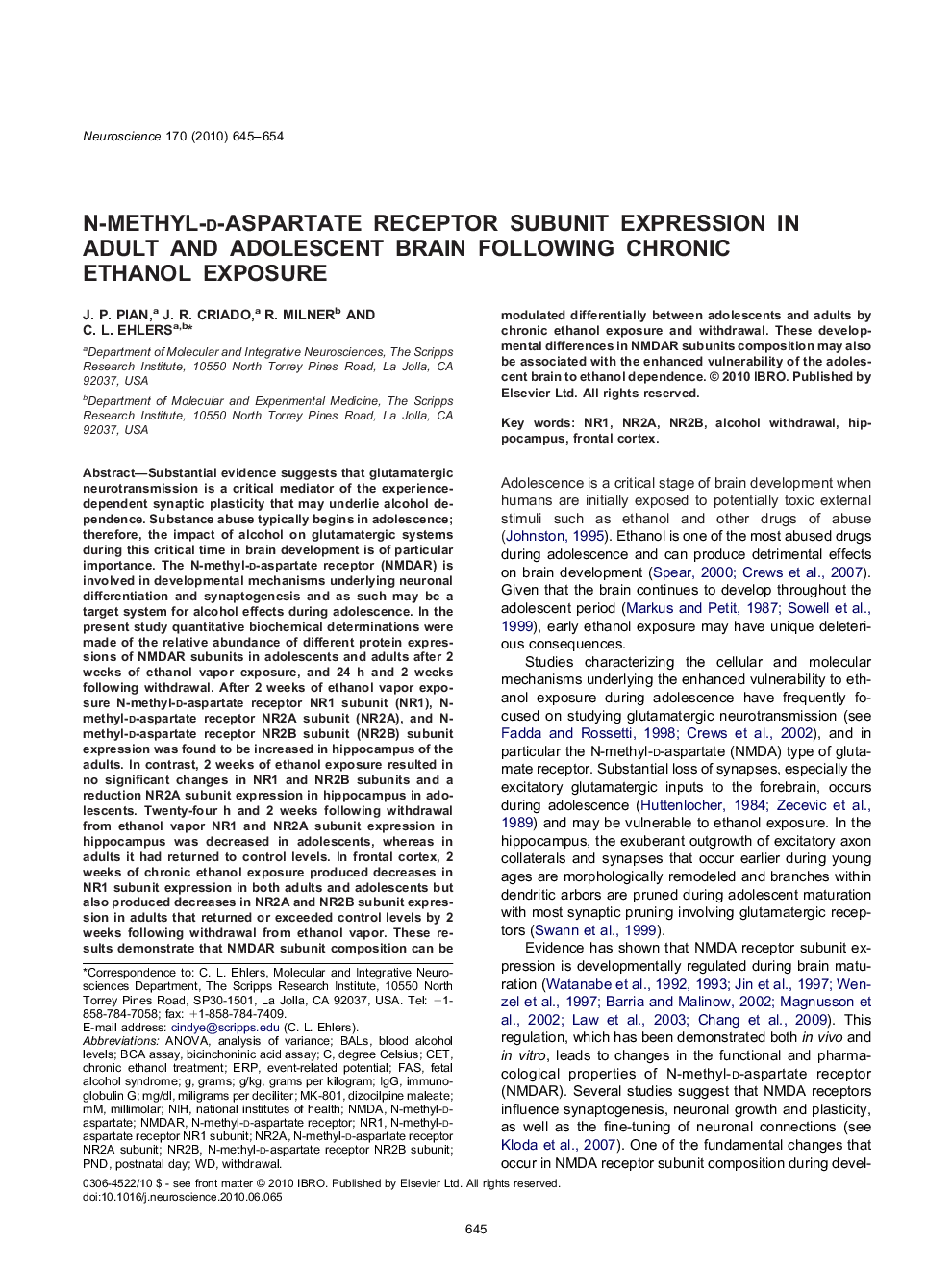| Article ID | Journal | Published Year | Pages | File Type |
|---|---|---|---|---|
| 6276961 | Neuroscience | 2010 | 10 Pages |
Abstract
Substantial evidence suggests that glutamatergic neurotransmission is a critical mediator of the experience-dependent synaptic plasticity that may underlie alcohol dependence. Substance abuse typically begins in adolescence; therefore, the impact of alcohol on glutamatergic systems during this critical time in brain development is of particular importance. The N-methyl-d-aspartate receptor (NMDAR) is involved in developmental mechanisms underlying neuronal differentiation and synaptogenesis and as such may be a target system for alcohol effects during adolescence. In the present study quantitative biochemical determinations were made of the relative abundance of different protein expressions of NMDAR subunits in adolescents and adults after 2 weeks of ethanol vapor exposure, and 24 h and 2 weeks following withdrawal. After 2 weeks of ethanol vapor exposure N-methyl-d-aspartate receptor NR1 subunit (NR1), N-methyl-d-aspartate receptor NR2A subunit (NR2A), and N-methyl-d-aspartate receptor NR2B subunit (NR2B) subunit expression was found to be increased in hippocampus of the adults. In contrast, 2 weeks of ethanol exposure resulted in no significant changes in NR1 and NR2B subunits and a reduction NR2A subunit expression in hippocampus in adolescents. Twenty-four h and 2 weeks following withdrawal from ethanol vapor NR1 and NR2A subunit expression in hippocampus was decreased in adolescents, whereas in adults it had returned to control levels. In frontal cortex, 2 weeks of chronic ethanol exposure produced decreases in NR1 subunit expression in both adults and adolescents but also produced decreases in NR2A and NR2B subunit expression in adults that returned or exceeded control levels by 2 weeks following withdrawal from ethanol vapor. These results demonstrate that NMDAR subunit composition can be modulated differentially between adolescents and adults by chronic ethanol exposure and withdrawal. These developmental differences in NMDAR subunits composition may also be associated with the enhanced vulnerability of the adolescent brain to ethanol dependence.
Keywords
NR2ANIHNR1NMDARmg/dLMK-801N-methyl-d-aspartateNMDANR2BFASPNDIgGbicinchoninic acid assayimmunoglobulin GCETWithdrawalERPanalysis of varianceANOVAAlcohol withdrawaldegree celsiusChronic ethanol treatmentDizocilpine maleatepostnatal dayblood alcohol levelsFetal alcohol syndromefrontal cortexNIH, National Institutes of HealthmillimolarHippocampusEvent-related potentialgramsN-methyl-d-aspartate receptor
Related Topics
Life Sciences
Neuroscience
Neuroscience (General)
Authors
J.P. Pian, J.R. Criado, R. Milner, C.L. Ehlers,
